In case you haven’t heard of it, Strava is a website/mobile app that allows you to share information about your mountain bike rides using GPS data collected during the ride. The social network is built around the idea of tracking your fitness progress and challenging friends (and even strangers), which makes the whole thing pretty addictive for a lot of riders.
When we first published this article back in 2012, Strava had already made a significant impact on the sport of mountain biking after being in existence for only a few years. Now, almost four years later, Strava is the single most prevalent fitness tracking app in existence–and especially in the sports of road and mountain biking. These days, it’s less common to meet a fellow rider who doesn’t use Strava than one who does. As a result, Strava’s effects on our sport have only been amplified.
Improving Fitness
Perhaps the biggest positive effect Strava is having on mountain biking and endurance sports in general is making fitness fun. Adding a competitive element to every workout, even if it’s just trying to set a new personal record, makes everyone stronger. It would be interesting to see how ride times trend for Strava members over the course of their membership… my guess is they improve trail times much faster than for those who don’t use it.
Strava!
In Atlanta where Jeff and Aaron live there’s a pretty good group of folks who use Strava, but in outdoor hotspots like Denver, Strava use has truly exploded. In fact, we’ve heard from multiple people (including staffers at IMBA) that it’s not unusual for riders in Colorado to fail to yield the trail while shouting “Strava!” to let you know they’re trying to set a new PR on a particular trail section. With Strava, every ride can become a race, with the resulting ego clashes and occasional conflicts.
Some riders have taken things even farther, risking personal injury to themselves and others. In 2010 a rider died after losing control while trying to set a new speed record for a descent in Tilden Park in Orinda, CA because someone had recently posted a faster time. His family sued Strava, saying the man was “obsessed” with Strava… which could easily describe a lot of folks.
Back in 2005 we tested out a similar concept here on Singletracks called “Virtual Bike Racing” (you can still see the page here). As you can see from the disclaimer, we understood that some riders might ride out of control in pursuit of a virtual title.
Secret Trails Exposed
Admittedly, some of us ride off-road in places we aren’t supposed to ride. Whether it’s a trail that’s officially closed to bikes or a gray trail that is on the down-low, Strava sees all and by default, makes the ride public to all. I haven’t heard any reports of land managers using Strava to identify trail poachers but it’s certainly a possibility.
There are a few trails in the Atlanta area that everyone knows as “the secret trails,” and it’s sorta like Fight Club, where the first rule is you do not talk about the secret trails. One of the local secret trail builders is famous for asking riders he doesn’t know, “Are we on the internet?” But even if no one posts these trails to a website like Singletracks, you can bet the trails are mapped and cataloged on Strava–it’s basically automatic every time you use your phone or GPS.
Now, it is possible to mark a ride as private, but hardly anyone does this since it defeats the biggest draw of the app which is to challenge other riders. With Strava, secret trails will never stay that way for long.
Strava’s Global Heatmap
Since this article was first published, Strava has released new technology that unfortunately only exacerbates this issue, revealing less-than-legal trails for the entire world to see. This new technology is their Global Heatmap.

The Global Heatmap aggregates all public ride data (there’s a running map as well) from all of Strava’s users, and puts it onto one massive, global map. The brighter the line on the map, the more people have ridden that route. The fainter the line, the fewer number of people. Some lines are even so faint that you can’t see them unless you zoom in all the way… but even if one person has ridden it, it’s there, if you zoom in far enough.
While this can be a very useful tool for locating the most popular legal routes in an area, if you are intimately familiar with the trails and roads in your local area (like an experienced mountain biker or a Forest Service ranger), you can easily pick out lines on the heatmap that aren’t actually present on the official trail map. Some members of the Singletracks Staff have confirmed this to be true in their local areas, and at times the highly-popular illegal (or illegal-ish) routes are brighter and more bold than even the legal trails and roads.
So, the moral of the story is: if you’re riding a trail that’s even so much as questionable, don’t go posting your ride as public on Strava!
Mountain Bikers Banned from Existing Trails
A brand-new development in the plethora of contentious mountain bike access issues is the banning of mountain bikers from trails which are currently bike legal, based on the speed data stored in Strava. Think I’m making this up? I wish. That’s exactly what just happened in Los Altos, California. (You can find final confirmation of the bike ban in this article from February 23, 2016.)
From the original article:
“Blame it on Strava. The mobile app – and the cyclists who use it to brag about achieving top speeds on trails – weighed heavily in Los Altos Hills city councilmembers’ unanimous decision Jan. 27 to entertain an ordinance prohibiting bicycles from Byrne Preserve.
I’m done with this as far as I’m concerned,” Councilman John Radford said. “The speed numbers that were talked about tonight are just incredibly unacceptable. I can’t even believe. Sorry, whoever’s done those apps and whoever puts that together – that just put a hole in the whole argument.”
Although Radford and his fellow councilmembers expressed considerable reluctance to deny an entire class of enthusiasts access to the popular open-space area, Strava-broadcasted boasts of trail speeds topping 20 mph and concerns about safety ultimately influenced their approval of a motion introducing the ordinance.”
While we at first avoided discussing this in a public forum for fear that more anti-mountain biker groups would take this same approach, this is a critical issue that needs our attention. Mountain bikers being banned because of the sheer fact that we’re mountain bikers, even if we’re not doing anything illegal, is a very real threat.
So what’s the takeaway? If you live or ride in an area where you know the access issues are contentious, again, it might be best to mark your ride as private. You might not gain any virtual kudos, but on the flip side, you won’t lose access to any of the very real and tangible mountain bike trails that you enjoy on a regular basis.
Exploring New Places
While Strava can be used as a way to compete against other riders using the segment feature, it can also be used as motivation to get out and explore new (legal) trails that you might not even have heard of before. Simply by watching my Strava news feed, I’ve seen cool rides posted in locations unbeknownst to me, that have prompted me to want to go and check that place out for myself. I’ve even observed one person in my friends list riding a relatively-new, unknown trail, and then a cascade of other Strava friends riding that same trail, seemingly inspired by the original explorer.

While the Global Heatmap above can be a great resource for finding trails and scouting routes, your own personal heatmaps (pro feature) can provide motivation to explore new areas and connect the different sections of your map with various lines. Personally (Greg speaking), this is my favorite Strava feature, and more than anything else it has motivated me to explore and experience new trails and routes both locally, and far afield!
Race Scouting
Strava has become a valuable tool for scouting competitors before races and creating strategies based on past performance. It’s also a great tool for previewing race courses and getting segment-level detail showing how you compare to others, which is helpful in post-race analysis.
Strava also makes it easy to “follow” other riders, particularly pros who have signed up for the service. For the pros, mountain bike racing is ultra-competitive, and it would seem that giving away too much information about training routines, routes, etc. might give rivals a leg up. Based on the few pro riders I follow, it seems many of them limit which rides they post, which seems like a solid strategy.
Of course it’s not just Strava that’s impacting the sport of mountain biking–internet and mobile technology is everywhere, and it’s changing our entire world. What’s the next big thing? I guess we’ll just have to wait to find out…
[see_also id=’232854′]
Your turn: If you use Strava, has it changed the way you ride? What other technologies are impacting mountain biking today?
This article was last updated on April 4, 2016 at 7:12am MDT by Greg Heil. Greg added the sections “Strava’s Global Heatmap,” “Mountain Bikers Banned from Existing Trails,” and “Exploring New Places.”










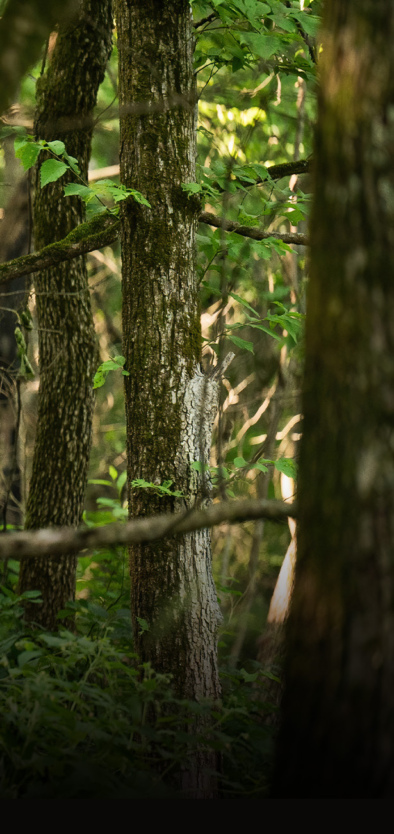






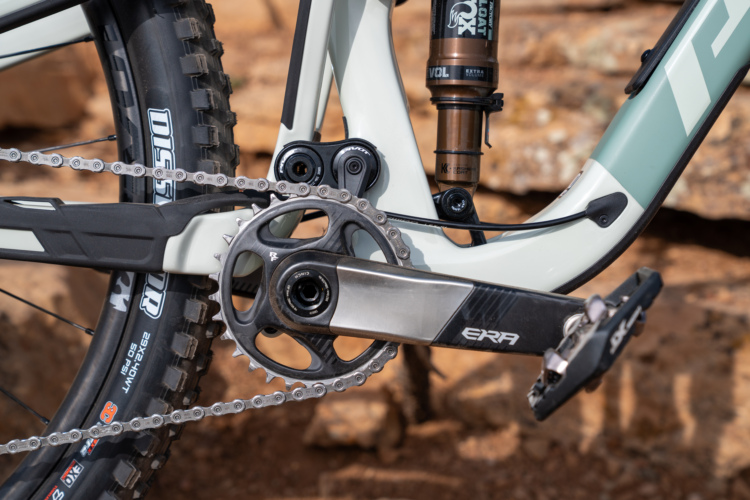
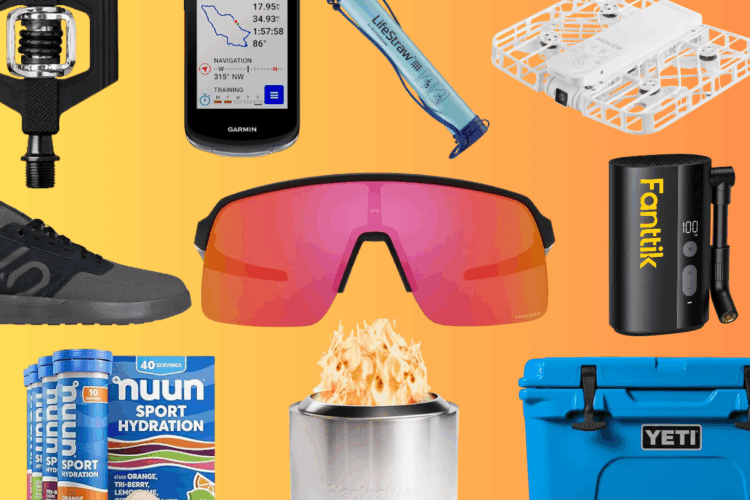
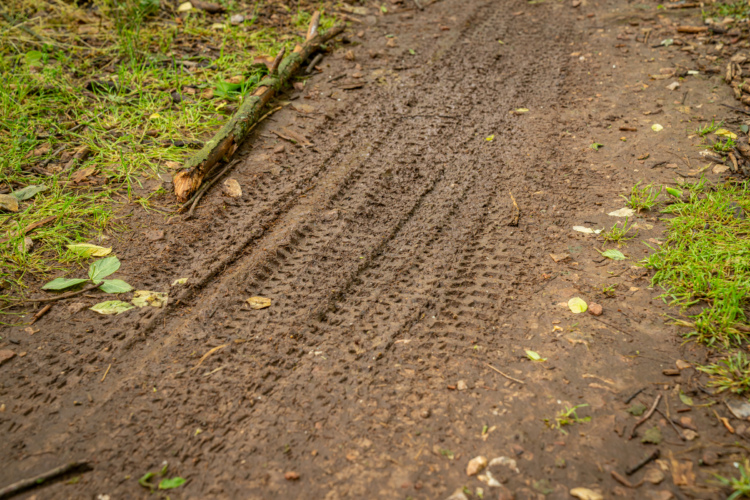
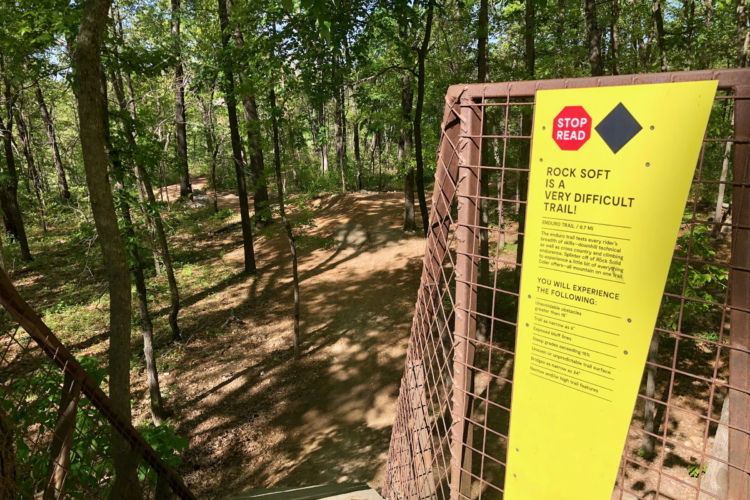

53 Comments
Aug 8, 2014
Sep 7, 2012
For me, it's not as much about competing with others... maybe I'm just not fast enough (although I've gotten two emails this week saying I've lost two KOMs). Personally, I just love tracking my own personal statistics, and Strava is a great way to do that. Being able to go on there and see that I've ridden almost 1,700 miles this year is satisfying.
Re: secret trails (or trails not open to mtbing): I think this is ridiculous. It's people who record everything they do, via Strava and with gopros posting it on youtube or posting photos on their facebook pages, including when they're doing something illegal, that will create all sorts of fall out. I posted a news article on the forums a few months ago about a super popular jump spot in an urban area out west that got bulldozed because videos of it were popping up all over youtube. The spot had been around for close to 20 years, but people who don't know how to keep their mouths shut when they log on to a computer got the place demolished.
In my opinion, if you're going to go out and do something questionable (which I am not condoning), at least have the decency to have a closed-mouth and electronics-free ride. Keep the cameras off, the GPS off, and the facebook statuses off. Or at least, if you run the GPS to log your stats, remember your miles and your time, don't save the file, and just enter them into your Strava manually. That way, you can still keep track of total mileage, time, etc, but don't run the risk of outing secret trails.
Anyhow, my $0.02!
Apr 8, 2016
Our household has 3 riders, all on Strava, but 2 ride with phones and 1 with garmin.
We have noticed that when we ride together, the 3 riders' Strava data can be quite different.
The main differences that we find are:
- garmin tends to not record some segments, especially when riding on trails that are amongst tall trees and steep walls etc.
- the garmin does appear to give fast times, particularly on segments that loop close to the segment finish point, this becomes apparent especially when your riding buddy that started and finished the segment within metres of each other goes and times a segment 30 seconds faster....
Lately we have noticed snobbery between the garmin folks and the phone app riders.
In all of our garmin vs phone discussions within our 3 device household, the consensus has settled on a belief that both devices have issues and each also has good points.
I now ride with phone app via a Samsung S7 and find the gps to be super strong and accurate, as a test you could try and start a garmin while still in your shed (my garmin cannot gain satellite signal in my shed, yet my phone does gain signal in the shed) this is a simple illustration of why a garmin ride can give straight lines on the map or record segments that you didn't even ride.
Strava is the only social media that I use regularly and it has changed my life.
I'm excited about rides, I love the data and in particular I enjoy the friendly competition and new friends gained. But more importantly it is part of a positive lifestyle that has made me, my wife (hubby is not chubby?) and my doctor happy.
Would I still ride if Strava disappeared? You bet.....
Would I get as much joy from riding? Probably not.
Apr 8, 2016
http://www.singletracks.com/blog/gps/gps-distance-accuracy-test-smartphone-apps-vs-dedicated-gps/
Apr 8, 2016
No, not really, haha, but that would just kill me inside. It's fun to see statistics on your riding and how you compare to others. It's scary to think some places have an issue with the speeds they see in the data, but I don't that's too widespread and hopefully it won't become widespread.
Apr 9, 2016
But if yelling out "Strava" is a thing that's appalling. Granted, I almost always ride early in northern Colorado. This means no crowds, and the general (if irrational) feeling that every other rider out there is my bestie (seriously, almost no negative experiences).
Sep 10, 2012
Sep 7, 2012
Sep 8, 2012
Jan 9, 2013
Apr 27, 2023
Apr 18, 2013
Sep 7, 2012
Racing dangers are there, but thats no different than any other competitive activity. Its all about personal responsibility. If Strava started pulling or limiting popular features that some folks use irresponsibly, a competitor would simply step in to fill the void.
Sep 7, 2012
I do track my rides via Garminconnect so I can see how much I've ridden and compare times between different runs. If I didn't have a site that tracked rides, I would probably use Strava or the ride tracker here on Singletracks.
Sep 7, 2012
Sep 7, 2012
I'll have to check out the layout to see if I like it better than the Garmin's site. It's pretty bare bones.
Sep 9, 2012
I agree, it's addictive and makes me going faster. So, it does impact mountain biking too
Sep 9, 2012
Jul 12, 2015
thanks!
Finn
Sep 9, 2012
That being said, the phone GPS chipsets have been getting a LOT better lately. Mine in my Blackberry even has WAAS capability for increased altitude accuracy.
Sep 9, 2012
The only difference is that some apps let you mark an actual trackpoint at specified times (I use 2 seconds) whereas some just post a "trend" line for lack of a better term.
Sep 9, 2012
Sep 7, 2012
There are more anti-social aspects of Strava beyond running people off the road while trying to set a PR.
If I'm trying to set a time, I'll tend to leave my girlfriend behind, or get angry that she is fumbling with the pedals instead of getting on with it.
Having the GPS track you also alters your behavior. I'll frequently leave my bike stationary and walk to the water fountain, so that it doesn't register that I am "moving", thereby skewing my average time.
It definitely makes you go faster though, for better or worse. It's shocking how fast some people are (although the segments aren't always computed right).
I wish they'd give you a list of all your times for a given segment - it's not really a dedicated training program.
Apr 6, 2016
Sep 7, 2012
I forgot to mention in my original post that a few folks have figured out how to alter GPS data to "cheat" on Strava. All the more reason not to take the KOMs so seriously.
Sep 7, 2012
Some edits are reasonably legitimate. An example is that on the main climb at Bear Creek, I accidentally went up the wrong fork, which then botched my ranking on the climb. I could edit the file to remove the inadvertent fork, and since I was still working (not resting) this seems ethically fine. In a place where you only get one shot at something, this might be worth it. On the other hand, the same methods are probably used by people to delete rests that they take on a 40 mile ride, or to just blatantly cheat and make their time much faster.
That said, it would be hard to stop motopacing, drafting etc, although that is more relevant for road biking.
Other interesting points:
GPS will receive a big upgrade in 2014, making it significantly more accurate - 1meter vs 5meter of current accuracy. This will obviously impact the accuracy of GPS, and thus Strava speed/course data.
Increasing numbers of phones and GPS devices have barometers, which assist with GPS lock and/or replace elevation info. This means much better elevation profiles, which should smooth out some of the "power" calculations and provide more accurate climbing data.
To Greg's point - Yes, there's a lot of inter-device variability from device to device, and even for the same d- note how the tracks often deviate from the actual course you are on, so obviously they sometimes deviate "ahead" or "behind" where you are going.
Jeff - Have you considered reviving the concept of GPS racing? You already have a database of "clean" GPS Trail Maps, which actually gives you a leg up on Strava. Their technology doesn't even work that well for loops/out and backs, so the gap doesn't seem insurmountable.
Sep 7, 2012
Sep 7, 2012
Sep 8, 2012
Sep 14, 2012
Sep 14, 2012
Nothing I have ever seen has done more damage to more trails as rapidly as strava has. I see no point in building new singletrack until this fad blows over and mountain bike riders go back to being people who care about the singletrack and the environment in which we ride more than they care about some bogus KOM or QOM title.
Lots of us train hard and race hard and have been logging our mileage for years- since when do we need to share that with the rest of the world in order to feel like it matters? Oh- that's right- on RACE DAY when we lay it all out on the line en masse with agreed upon rules in the appropriate setting. Strava is to racing what chat rooms are to relationships- nonsense.
Sep 14, 2012
Ive seen others and myself run off trails by inconsiderate riders long before Strava came out, and I dont think that would stop if the program disappeared tomorrow.
KOMs are really are just a minor part of the programs draw for me. For us slower folks, personal records are a great motivator, but the ease of use - tracking total miles/activities, finding new routes, automatically tracking you segments, and finding new friends are all more important to me than "race" times. Its a great accessory, but If you are riding only for Strava, you're certainly missing the point of being out there in the first place.
Sep 14, 2012
jerks will be jerks- true, but the new kom determination runs people off the trails far more than pre-strava in my and others experiences. used to be both parties would yield and nearly argue who to go first. yes, an occasional jerk, usually someone who is a newbie not understanding the courtesy riders afford each other. but now it's the spandex army guys on the gram counting, expensive bikes that run you over, not the newbies in t-shirts. but that i can deal with. in addition, as mentioned above, there are sanctioned events to properly race. virtual racing is not the same. bs some may more appropriately call it.
tracking miles, etc: definitely a good and fun aspect of strava. so long as you use it only for legal, known trails. but even her, therein lies the rub, and only part of it.
'hidden' trails: perhaps you are more fortunate than us here in san diego where multiple land managers, parcels, gov't bureaucracy, and other factors make it extraordinarily difficult to attain trails, whereas losing them occurs without issue. thus, most of the trails here are hidden, so to speak, on unused, vacant parcels. as anyone who has built trials knows, this can take some time and effort. having your trail go public due to strava is heart-wrenching. two of my favorite spots are now being monitored by the officials who are awarding those out for a ride in nature with very expensive summonses. thank you very much. of course you should not use strava on such trails. unfortunately people still do. and officials can readily monitor usage while sitting at their computer.
sanitization: whether you ride on a legal or less than legal trials, there are obstacles that make trails challenging and interesting. it gives them personality. these sections are also useful to improve your riding abilities. due to strava trails have been sanitized for speed. for example, corners cut, rocks raked to the side, roots and larger rocks removed, natural drops cut down, until yes, you have the equivalent to a skinny fireroad. great fun. might as well ride the asphalt at the park. but a far more crucial aspect to sanitization is that it does away with the natural barriers of erosion. sections become guttered and unridable unless tended to. unfortunately those who build/repair are not those who sanitize. the builders know better.
the advantages of strava are pretty cool. but from what i've seen here personally, the disadvantages are on a very different scale. prior to strava i used to check mileage, time, heart-rate, and altitude gained/lost. the day i got a new(er) bike i left off the odometer/time computer, started hitting more challenging trails and never looked back. i'm never in a hurry to get up a hill anymore. i stop more often just to enjoy the surrounding or a chat with my friends or son. i play around with features because i have the time to do so. i enjoy and appreciate riding for riding so much more and laugh a lot more too. i'm hopeful this fad will end before the trails do.
Sep 14, 2012
Everyone has a right to enjoy the trails as they see fit, so long as they are courteous to the other people out there and not damaging the trails. It shouldn't be more complicated than that.
Sep 14, 2012
Sep 14, 2012
i just would like to emphasize we are all on the same page in our passion of mtn biking and share the same trails. i'll mark up jensliney’s comments as angry and passionate, as i am too about this issue. perhaps it was my misunderstanding of zealot used in a more partisan nature, but may not have been meant in that vain.
as has been mentioned strava can be an addictive and fun tool for both enjoyment and training. and you rightly mentioned it can also have less favorable side that the strava users should be held accountable for. as mtbgreg1 also mentions video/youtube can also impart a negative impact factor in exposing trails.
commonsense would dictate not to use strava on other than sanctioned trails, and not to post youtube videos with the actual names of these trails. the impacts for not taking these simple precautions are obvious. but how to hold these users accountable and temper these negative issues i think is a cause of some frustration, at least for me.
Sep 14, 2012
Zealot: "A person who is fanatical and uncompromising in pursuit of their religious, political, or other ideals."
Read his post again and tell me that definition doesn't fit. I think people who show no desire to compromise and work through problems are not doing anyone who loves this sport any favors.
Putting that aside, I am not excusing the sanitation of the trails. In fact, it angers me when I see it happen, too. I definitely see that as trail destruction, and I specifically mentioned that as something for which Strava users should be held accountable.
Sep 14, 2012
if you don't (yet) see less courteous behavior or more sanitization/damage to trails and environment, that is a valid opinion. however, jensliney and myself have seen an exponential shift. also valid opinions.
i don't know what areas either you or jensliney ride, and that may be a factor that should be considered.
Sep 7, 2012
I would like to know about those secret trails though. Hmmmmmm.
Sep 8, 2012
Sep 7, 2012
May 6, 2014
I think a more casual atmosphere needs to somehow coexist. If I am riding and the trails are busy I am not trying to break a record. Save that for when I get off work early on a weekday :-)
Sep 7, 2012
I think it's a neat tool, but some folks take it waaaaaay to seriously. In my opinion, it's good for training, not virtual racing. If you want to race, do the real thing.
Aug 1, 2016
Sep 7, 2012
I've had to break off attempts late into a segment because of another biker or a hiker, and you just have to take it in stride.
That said, Strava is what actually got me interested in racing XC, so that's another aspect that makes it cool. I know I'm not the only one.
Sep 7, 2012
Apr 8, 2016
Sep 7, 2012
This morning I took down a KOM and set a new PR on another segment, and I'm pretty much going to be in a great mood all day because of that. On the other side of the coin, when I get one of those dreaded "You just lost your KOM..." emails, I can think of nothing else but getting out there and getting it back.
Strava is extremely addictive for a competitive person like me, but I still try to balance my riding time between balls-out riding for KOM bragging rights and just enjoying the trails for pure fun.
Sep 7, 2012
Jun 14, 2013
May 18, 2013
Sep 7, 2012
Sep 13, 2012
pros:
1. you can be kom in more than your own mind
2. beating your personal best is all the excuse you need to run people off trails, because they'll understand that you're 'motivated'
3. a great reason to go out and do some trail work. a sanitized trail is a fast trail.
4. people will thank you for turning a once underground trail on to the rest of society, including officials finding out about and monitoring use of these 'unofficial' trails on their land parcels
cons:
1. you didn't beat your personal best because:
(a) the guys you ran off the trail were yelling such profanities that it drowned out the killer beats from your ipod and threw off your cadence,
(b) the guys who built the hidden trail beat the piss out of you and your bike so you never finished your run, although the gps was safely fitted up your butt so you could find your way home, and / or
(c) you got a summons from the officials who used your (or someone else's) strava uploads for monitoring high density poaching
2. you completely lost track of why you're out there in the first place
trails in my area have been ruined by sanitization for faster times. i've been run into the bushes by steely eyed rides not giving an inch. people are getting summonses on once hidden trails. you want to increase your workout, use your own personal info. mtn biking is (or was) it's own app for fun. you need electronic verification, stay home and play video games. you want to laugh and have a great ride in nature, give me a call.
btw- never enjoyed mtn biking as much as the day i took off mt cycle computer (ok, odometer) and just dug riding for riding.